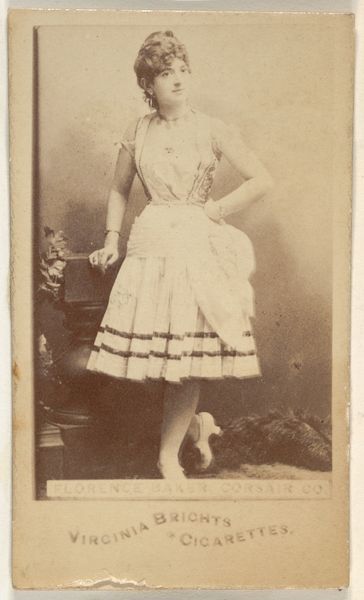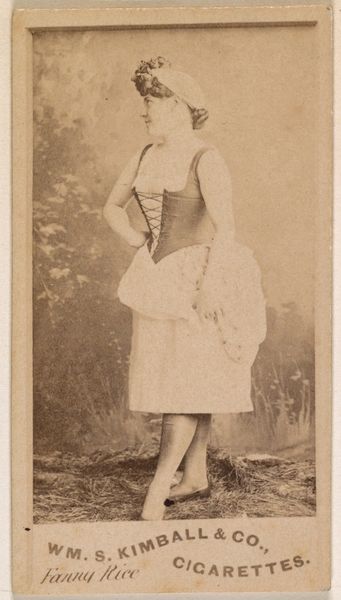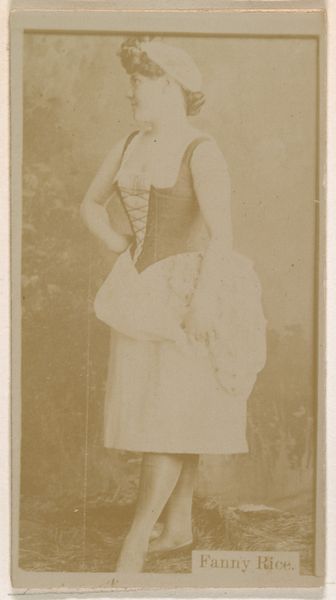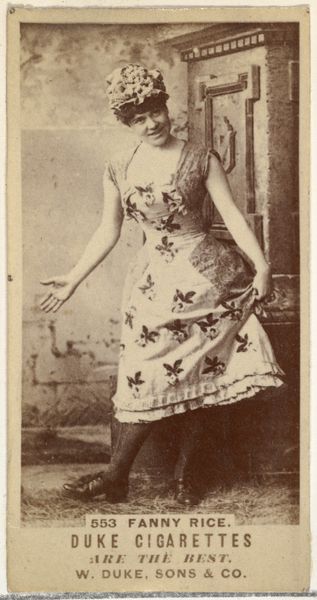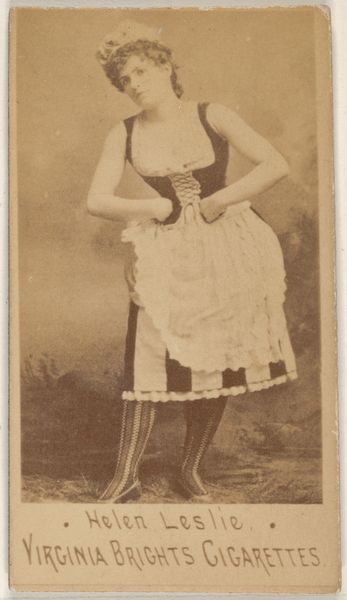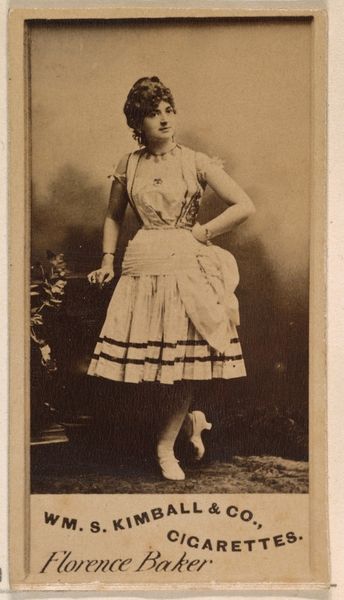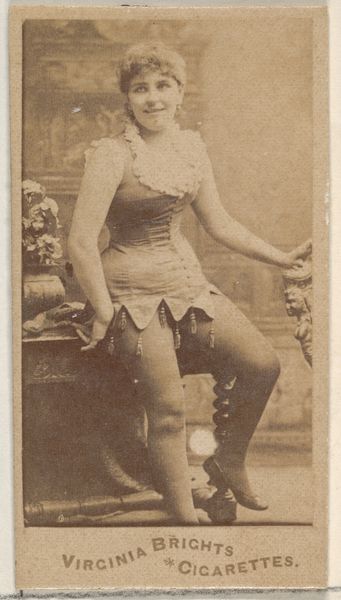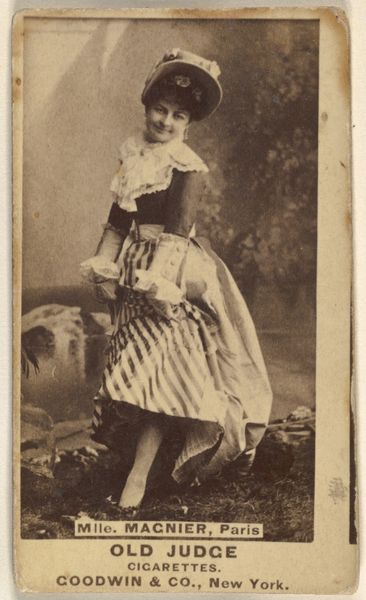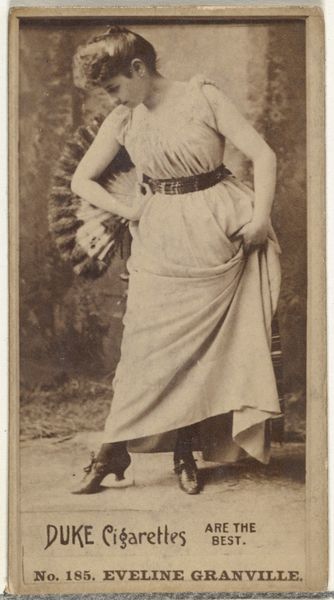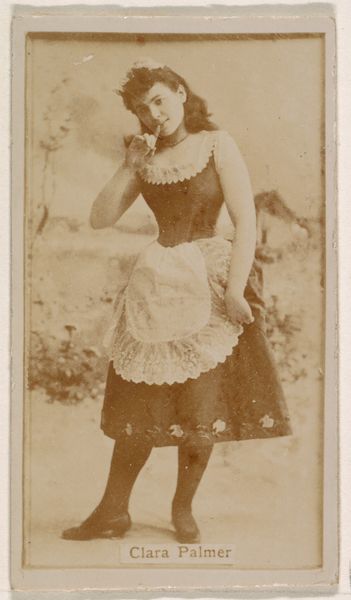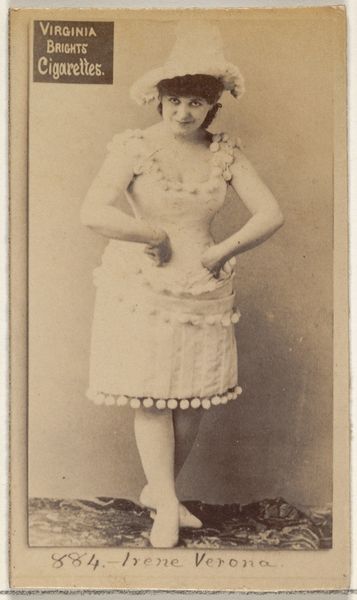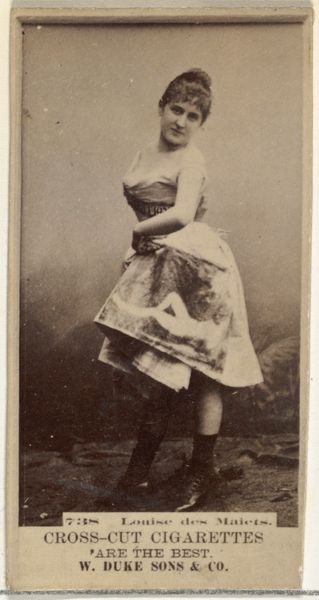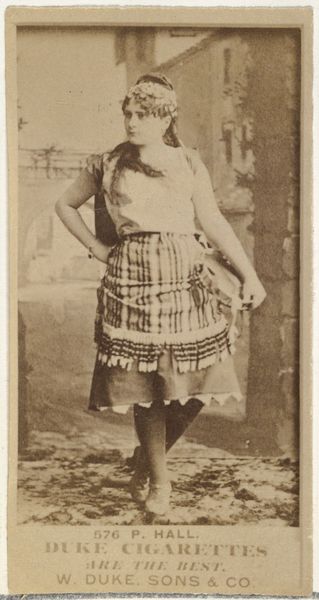
Florence Baker, Corsair Co., from the Actors and Actresses series (N45, Type 1) for Virginia Brights Cigarettes 1885 - 1891
0:00
0:00
drawing, print, photography, albumen-print
#
portrait
#
drawing
# print
#
impressionism
#
photography
#
albumen-print
Dimensions: Sheet: 2 3/4 x 1 3/8 in. (7 x 3.5 cm)
Copyright: Public Domain
Editor: This is an albumen print from around 1885-1891, featuring Florence Baker of the Corsair Co. It’s part of the Actors and Actresses series promoting Virginia Brights Cigarettes. There's something quite posed and performative about it. What strikes you most about this piece? Curator: What grabs me is the blatant commercial purpose intertwining with what we might now consider art. These "cigarette cards" were essentially miniature billboards slipped into cigarette packs. Their mass production reflects the rise of consumer culture and advertising's increasing influence. Editor: So it's less about artistic expression and more about product placement? Curator: Precisely. Though photography itself was an evolving art form, its use here highlights the way imagery was being weaponized, if you will, to sell a lifestyle alongside a product. The focus on actors and actresses also capitalized on burgeoning celebrity culture. Think about it – who was included, and what image were they projecting? Editor: Good point. Florence Baker isn’t just selling cigarettes, she’s selling a lifestyle of glamour and entertainment, right? And by aligning Virginia Brights with these figures, were they subtly suggesting smoking was a sophisticated habit? Curator: Exactly. And notice the targeted demographic – were they marketing these cards to men, who'd find these actresses attractive, or women, who'd aspire to this lifestyle? Or both? And how does the fact this artwork resides now within the Met's collection affect how we read it? Editor: I never considered how its current display influences its interpretation. Seeing it in a museum gives it a certain validity, doesn't it? Curator: Yes, it does. And that transition is part of the evolving story of art – what gets deemed "art" shifts over time depending on who holds the power to make that decision. Editor: I guess even the art world is susceptible to those social and political currents. Thanks, I learned a lot today. Curator: My pleasure. Thinking about art in the context of power and influence opens up a whole new world.
Comments
No comments
Be the first to comment and join the conversation on the ultimate creative platform.
